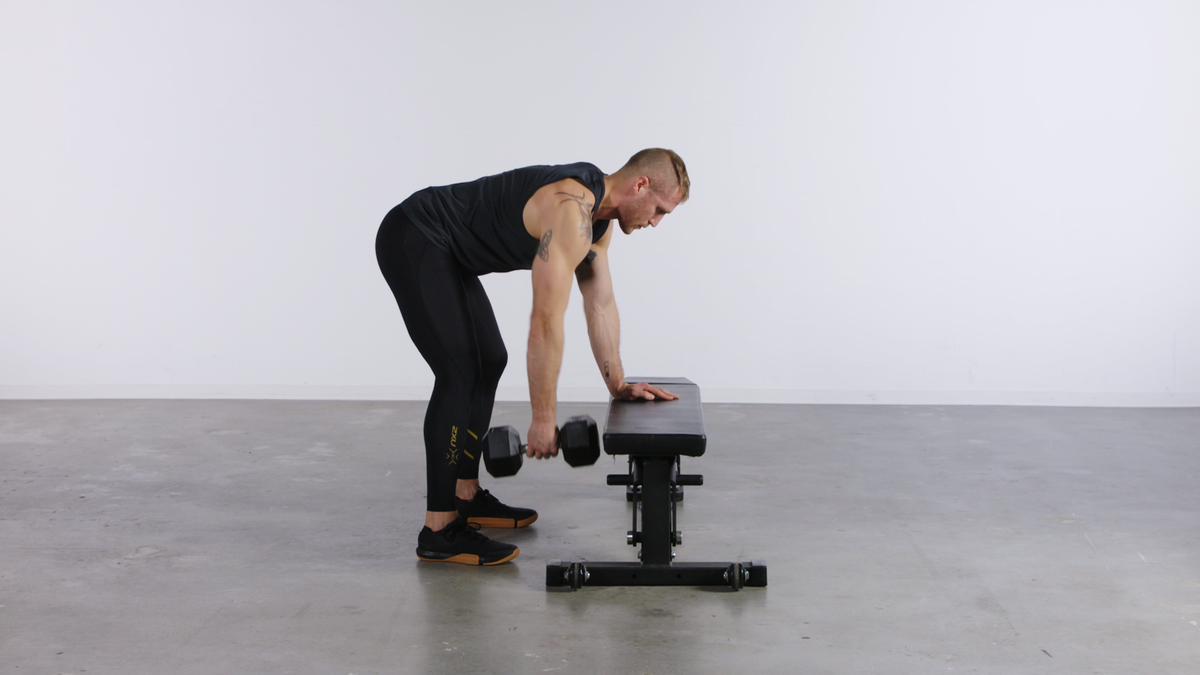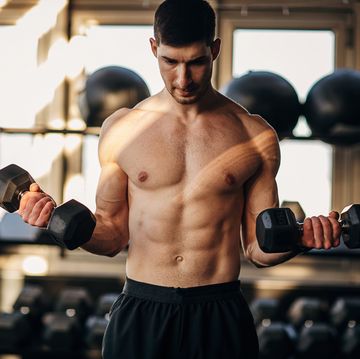How often and effectively are you training your back muscles? Far too often, we neglect how much love our back muscles need and deserve in the gym in favor of the muscles we can see in the mirror. We default to training muscles like the chest, arms, and abs, and forget to spend an equal amount of our time strengthening the back muscles.
When it comes to training the back muscles, it's important to remain cognizant of your back muscle anatomy. By acknowledging how the back muscles function, we can train them more strategically.
The back is composed of multiple muscles that work to support the posterior portion of the torso through a variety of movement patterns. Some of the largest back muscles that most people are familiar with include the trapezius, latissimus dorsi, rhomboids, and erector spinae. But that's just the start. On top of these, there are many smaller back muscles that indirectly receive attention when we work to train the larger back muscles.
Strong back muscles will have a positive carryover to your other lifts, day-to-day life, and sports performance. If we can create a stronger base to pull things to us (one of the most essential functions of your back muscles) and improve torso stability while doing so, we'll be back to strengthen back muscles holistically, not just aesthetically.
The exercises below will help you train your back muscles more strategically. Once you conquer the basics, you can then tackle variations for the back exercises below to increase your overall effort when you're working to strengthen the back muscles.
Why Having Strong Back Muscles Is Important
Training your back does a lot more than build muscle. All the muscles on the back side of your body, from your glutes to your lats to your hamstrings and rhomboids, help balance out the muscles on the front side of your body.
For a variety of reasons, you tend to use the muscles on the front side of your body more. You can see your chest and ab muscles, so you can’t be blamed for wanting to train them more. Life also often leads you to use the muscles on the front of your body more: You use your anterior deltoids just a bit every time you extend your arms to type or grab your steering wheel, for example.
To balance out all that work, you need to train your back especially hard — and your body will reap the benefits too. All that back strength will help you brace your entire torso better, and it will even make you better at exercises such as bench presses and shoulder presses.
What Your Back Muscles Do
The primary function of the majority of your back muscles is simple: They pull objects toward your torso. When you do row exercises, you pull a dumbbell toward your chest. When you do pullups and pulldowns, you pull your body up to a bar, or pull a bar down to your chest.
That’s not all your back muscles do though. They also help brace your entire torso, protecting and stabilizing your spine. This is an oft-overlooked benefit of strong back muscles. Your spine is the central path that controls neural connection to the body, and protecting it is essential. Your back muscles are highly responsible for protecting it during heavy, full-body lifts like squats and deadlifts.
Your back muscles also help protect your shoulder, in large part because of their relationship with your shoulder blades. Your shoulder blades play a huge role in shoulder function, and your upper back muscles play a key role in dictating how your shoulder blade moves. Every back exercise you do calls your shoulder blades (and by extension, your shoulders) into play.
Major Back Muscles You Need To Know
Before we start exploring critical back exercises, let’s study up on the key back muscles you’ll want to know.
The Latsissimus Dorsi
The scientific name for the broad, fan-shaped muscles in your back is latissimus dorsi, and they’re the largest back muscles you have. The lats attach to the upper arm bone (your humerus) and stretch from your mid-back all the way down to your waist. They’re your main pulling muscles for both horizontal pulls (rows) and vertical pulls (pullups). Keep this in mind: That means that even if you can’t do pullups or pulldowns, you can still train your lats.
Teres Major and Teres Minor
These two muscles are smaller muscles, but they assist in a lot of key functions. The teres major is known in fitness circles as the “lats’ little helper,” a reference to how much it duplicates the moves you’d make with your lats and helps you pull.
The teres minor, meanwhile, is a key part of your rotator cuff, helping to externally rotate your shoulder. The teres minor plays a huge role in shoulder stability.
The Rhomboids
The rhomboids essentially sit in the middle of your upper back, thick broad bands of muscle bordering your shoulder blades. They help retract your shoulder blades, a key function of all back training and an important way to safeguard your shoulders. By improving rhomboid activity, you’ll supercharge your ability to do any back exercise.
The Trapezius
Your traps stretch from the base of your neck to just above your tailbone, and they’re divided into three main sections: Upper, middle, and lower. They play a role in shrugging your shoulders, pulling your shoulders backwards (away from your chest) and pushing your shoulders downward (toward your knees)
Your Go-To Back Muscle Building Moves
The best back exercises you can do will challenge you to pull and brace, and they’ll get your back muscles working in the proper order. Build these exercises (and variations of them) into your workouts and expect major back growth.
Dumbbell and Barbell Rows
Horizontal pulling is a necessity if you’re aiming to build a strong, truly bulletproof back, and any row, from a cable row to a dumbbell or barbell row, is going to have you in horizontal pulling motion. The key to all rows is timing: Make sure your shoulder blades pull back and squeeze together as you’re pulling the weight toward your torso. Let them glide apart as you release the weight. Do 4 sets of 8 to 10 reps when you’re starting, and start with the basic dumbbell row. Need more rows? Check out these foolproof variations.
Pullups
Vertical pulling motions are your other key back movement, and they’ll recruit even more back muscle in a variety of ways. A pullup (or pulldown) actually requires you to engage your horizontal pulling muscles too, which is one of the reasons it’s a brilliant move. Also overlooked: you need to brace your core when you do pull-ups and pulldowns, building more back muscle and your abs too. Need a pullup variation? Here’s a super-hard one to work up to.
Band Pull-Apart
The band pull-apart will build shoulder health and strengthen your back too. It also hits all the muscles that help your shoulder blades move in proper rhythm. Get it into your workouts, thinking of doing 3 sets of 15 reps.
Deadlift
You may think of the deadlift as a leg exercise, because it does hammer your hamstrings and glutes. But that’s not the only thing it trains. You have to flex your back and shoulder blades to lift the weight off the ground and then essentially use all your back muscle (and your core) to brace your entire torso in a straight line while lifting the weight. There’s also underrated lat involvement as you fully stand up and “pull” the bar toward your torso. Start with 4 sets of 8 reps.
TRX Row
Stabilization is a key back function, and no row challenges that more than the TRX row (or the ring row). Stabilizing side-to-side will recruit not just major back muscles like lats and rhomboids but also your teres major and teres minor. You’ll also work your abs with the TRX row too. Keep this one high-rep, doing 4 sets of 12 to 15 reps, then gradually learn other versions of the TRX row like this one above.



















